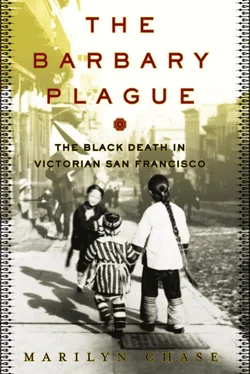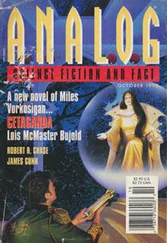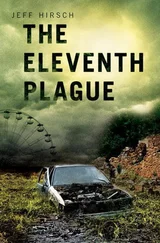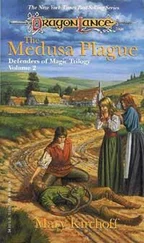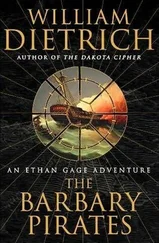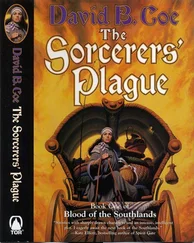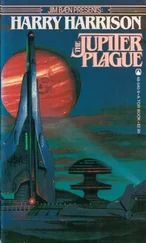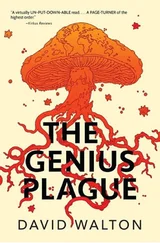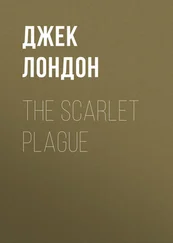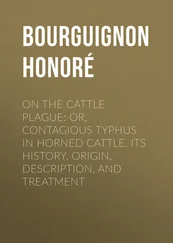Daniel Defoe, writing of seventeenth-century London in his 1722 work, A Journal of the Plague Year , said that the terror of the epidemic prompted “knavery and collusion” in infected towns where officials falsified burial records and fearful people hid the sick and the dead.
…[A]ll that could conceal their distempers did it, to prevent their neighbors shunning and refusing to converse with them, and also to prevent authority shutting up their houses; which, though it was not yet practised, yet was threatened, and people were extremely terrified at the thoughts of it. 4
Doctors were powerless to halt the Black Death, but that didn’t inhibit their invention of strange nostrums. To ward off infected vapors, they prescribed smelling apples, molded from sandalwood, pepper, camphor, and rose. People drank infusions of treacle, wine, and minced snake, while the rich took costlier compounds of crushed pearls and molten gold. One Italian apothecary named Gentile da Foligno crafted fanciful remedies from gemstones—including amethyst amulets and potions of powdered emerald. The latter remedy was said to be “so potent that, if a toad looked at it, its eyes would crack.” 5Unfortunately for the desperate rich, ingesting gems and gold didn’t cure plague and may even have hastened their death.
From fourteenth-century Italy, too, came ancient protocols for plague control: lazarettos, or isolation hospitals named after Lazarus, the leprous beggar in the biblical parable; and la quarantina , the quarantine of ships, originally set at forty days to commemorate Christ’s sojourn in the wilderness. 6
Given the dearth of scientific knowledge, people wrapped plague in religious mystery and interpreted its hideous effects as God’s punishment. To explain its occurrence, some people wove myths about plague showering down from comets, spread house to house by she-demons or flowing from wells poisoned by Jews. The scapegoats were bricked up in their homes and burned alive by suspicious and vengeful villagers. Such myths made plague a metaphor for medical catastrophe, while the reality of its transmission—from the bite of a lowly rat flea—remained veiled in mystery.
By the late nineteenth century, those remedies were consigned to history. But the Victorian Age introduced some harrowing remedies of its own. British colonial physicians in India prescribed that plague patients drink diluted carbolic acid, or cool their fevers by taking a refreshing ice-water enema. 7
Despite Blue’s premonition of doom in Genoa, the Black Death didn’t renew a major assault on Europe in June 1900. But the suspected Mediterranean cases kept him on alert for new waves of the third plague pandemic, then migrating from China across the sea to other ports around the world. Plague had inflicted violent mortality in Hong Kong, and Washington was monitoring reports by the British colonial authorities. From that day in Italy onward, plague would be a leitmotif in Blue’s career. Within the year, he would be ordered to return from Italy to the United States and assigned to San Francisco, where the infection was just beginning to insinuate itself into the city.
Like his predecessor Joseph Kinyoun, Rupert Blue was a son of the South. Born in Richmond County, North Carolina, he moved at the age of three to his mother’s hometown of Marion, South Carolina. His father, like Kinyoun’s, had served in the Civil War. Unlike Kinyoun, who entered public health work as a pioneer bacteriologist and founder of a prestigious national laboratory, Blue started as a simple foot soldier in the war on disease. He was a soldier’s son, drawn to a life in uniform, but when he enlisted in the U.S. Marine Hospital Service, it was not as a warrior, but as a healer.
Descended from a line of Carolina Scotsmen who stood over six feet tall, Blue had blue eyes, jet hair, and a barrel-chested Victorian frame well upholstered by a robust appetite and a love of boxing. He styled his hair with a center part and grew a curved handlebar mustache that he twirled when amused or twisted when preoccupied. He was the sixth of eight children—three boys and five girls—born to Colonel John Gilchrist Blue and his wife, Annie Maria Evans. His grandparents owned spacious Carolina plantations with many slaves. 8However, Rupert Blue, born on May 30, 1868, was a child of the Reconstruction and lived amid freed servants and field hands. Within their conservative southern milieu, the Blues were more progressive than many of their contemporaries. Mrs. Blue had been one of the few girls in the antebellum South to go to college. Colonel Blue, for his part, practiced law and served in the South Carolina State Legislature, where he championed the cause of women’s education. His lonely campaign drew jibes that he sought to see women admitted to South Carolina’s famous military academy, the Citadel. 9His bill failed, but a century later, the joke it inspired would come true.
The Blue boys and girls—Sallie, Effie, Ida, William, Victor, Rupert, Kate Lilly, and Henriette—toiled in Marion’s public and private schools, studying history and Latin. Of the younger Blues, Victor and Kate were extroverts who sparkled in company, while Rupert and Henriette (called Henriet or Hettie for short) were both shy, indwelling souls whom folks found it easy to underestimate. Rupert read avidly about classical Rome, studied the Bible, and devoured accounts of Napoleon.
The Blue children were baptized and confirmed in the white-pillared Presbyterian church on Main Street. They straddled logs on the reed-choked banks of Catfish Creek, less than a mile from their back door, to angle for pikes, jacks, and catfish. There were quail and partridge for the hunting. The boys’ menagerie included blooded calves and purebred dogs, Angora goats and merino sheep, while the girls kept pedigreed cats and prize poultry.
In spring, they held contests to identify the first notes of birdsong from the chuck-will’s-widows in the Carolina pines. The most succulent treat of a summer morning was savored in stealth. Creeping into the melon patch at dawn, with the dew still on the vines, the Blue children would “bust melons” open with their fists, devouring the ruby centers without ceremony or silverware. 10
The family’s plantation, Bluefields, was a stout, unpretentious family farmhouse with a broad-railed porch and heart-of-pine floors that rang with the steps of the parents and their eight growing offspring. On three hundred acres around their plantation, the family raised tobacco and cotton, corn and lumber.
Marion County, South Carolina, is shaped like a pork chop, stuck in the fork of the Big and Little Pee Dee Rivers. In summer, it is steamed languidly by a swamp that local Indians called Withlacoochee, but which the children knew simply as Catfish Creek. The town of Marion is anchored by stately Greek revival mansions, fringed with purple wisteria and the fuchsia blooms of crape myrtle. Any passing Yankees who dared steal its gray-green swags of Spanish moss as souvenirs would be bitten by red bugs, a source of local mirth to this day.
Marion was named for Francis Marion, the “Swamp Fox” of the Revolutionary War, who eluded the British and survived on roots and water. A century later, the boy who staged naval battles in Catfish Creek identified as much with the heroes of the Revolutionary War as with those of the War Between the States. As the Civil War waned, Marion escaped Sherman’s torch by an accident of the weather: A rainstorm flooded the Pee Dee River, and its rising waters deflected the Union general’s attack. Thankful Marionites dubbed the river “Sherman’s freshet.” 11Rupert Blue was born a son of the Confederacy, but he aspired to be in the Sons of the Revolution.
It’s often said the hero displayed gifts of brilliance and leadership in childhood. But, plainly, Rupert Blue didn’t start out as Marion’s most illustrious son. That honor belonged to his brother Victor, two years older, who emulated his father’s military service by entering the Naval Academy at Annapolis. After graduation, Victor served with distinction in the Spanish-American War, where he performed dangerous surveillance, gathering intelligence on enemy ships in the port of Santiago, Cuba. For this, he was feted as a naval hero. Chiseled, gallant, graceful in society, Victor cast a long shadow over his little brother. Round, shy, halting in public, the younger brother nicknamed “Pert” got lost in the glare of Victor’s glamour. 12
Читать дальше
